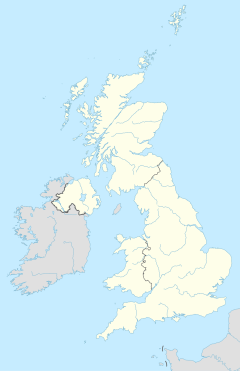
Joseph Pickford was an English architect that mostly worked within the English county of Derbyshire, and was one of the leading provincial architects in the reign of George III. The house he designed for himself in Derby is now the Pickford's House Museum.
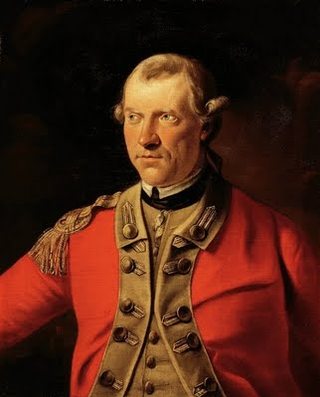
Major-General Henry Gladwin was a British army officer in colonial America and the British commander at the Siege of Fort Detroit during Pontiac's Rebellion in 1763. He served in the disastrous campaign of Edward Braddock and in other actions in the French and Indian War but is best remembered for his defense of Detroit in Pontiac's Rebellion.

St Oswald's Church is a Church of England parish church located in Ashbourne, in the county of Derbyshire, England.
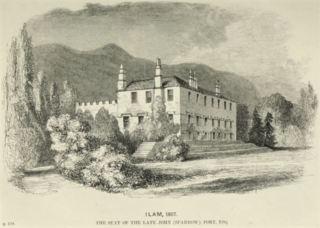
Ilam Park is a 158-acre (0.64 km2) country park situated in Ilam, on both banks of the River Manifold five miles (8 km) north west of Ashbourne, England, and in the ownership of the National Trust. The property is managed as part of the Trust's White Peak Estate.

This is a list of Sheriffs of Derbyshire from 1567 until 1974 and High Sheriffs since.

Alfreton Hall is a country house in Alfreton, Derbyshire. It was at the heart of local social and industrial history in the county. The history of the estate goes back to Norman times, but by the 17th century it was owned by the Morewood family, who were linked to local industry, mainly in coal mining.

Francis Mundy was an English landowner, Member of Parliament for the Derbyshire constituency and, in 1820, Sheriff of Derbyshire.
Henry Isaac Stevens FRIBA was an architect based in Derby. He was born in London, in 1806, and died in 1873. In the late 1850s he changed his name to Isaac Henry Stevens.
Edward Anthony Holden was a landowner who lived at Aston Hall, in Aston upon Trent, Derbyshire. He inherited land and bought more starting in 1833. He was High Sheriff of Derbyshire in 1838/9. By the time of his death he had created an estate of over 2,000 acres (8.1 km2) of land in Derbyshire and Leicestershire.
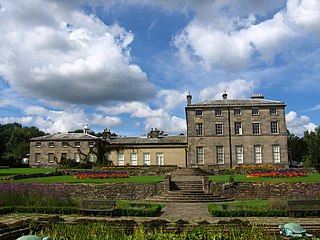
Allestree Hall is a 19th-century former country house situated in Allestree Park, Allestree, Derby. It is a Grade II* listed building but has been unoccupied for many years, and has been placed on the Heritage at Risk Register.
Thomas Levett-Prinsep was an English landowner in Derbyshire and Staffordshire. He took on the additional name of Prinsep on inheriting his uncle's holding of Croxall Hall.
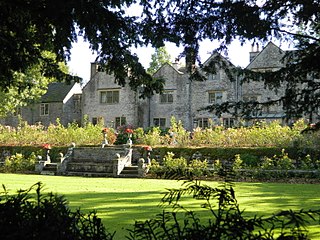
Bradbourne Hall is a country house near All Saint's Church, within the civil parish of Bradbourne, near Ashbourne, Derbyshire. It is a privately owned Grade II* listed building, and is not open to the public.

Mapleton, sometimes spelt Mappleton, is a village and a civil parish in the Derbyshire Dales District, in the English county of Derbyshire. It is near the River Dove and the town of Ashbourne. Mapleton has a post office, a pub called the Okeover Arms and a church. In 2011, according to census data, the Parish had a population of 147 people. There is an annual event in which people jump off of the Mapleton Bridge to raise money for charity.
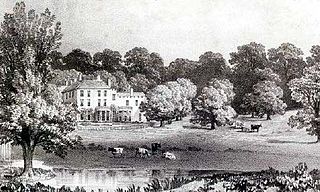
Ashbourne Hall is a Manor house originally built by the Cockayne family in the 13th century in Ashbourne, Derbyshire. The present building is part of a largely demolished, Georgian-styled hall built in the 18th century.

Yeldersley Hall is a building of historical significance in Ashbourne, Derbyshire, England and is listed on the English Heritage Register. It was built in about 1800 by a wealthy landowner and was the residence of many notable people over the next two centuries. Today it is a venue for special events, particularly weddings.
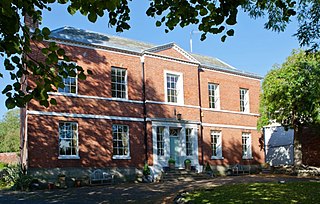
Breedon Hall, Breedon on the Hill in north-west Leicestershire, is a house of historical significance and is listed on the English Heritage Register. In 1620 it was a small timber-framed cottage. Soon after it was bought by the Curzon family and was successively enlarged until 1777 when it was given a new Georgian front. It was the ancestral home of the Curzons for over three centuries and then bought by the Shields family. Today it is owned by the Meynell family and provides bed-and-breakfast accommodation.
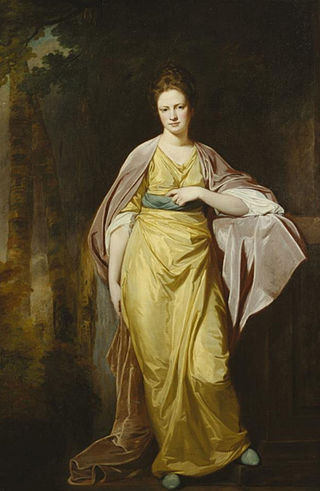
Ellen Morewood or Ellen Goodwin; Ellen Goodwyn; Mrs. George Morewood; Mrs. Henry Case-Morewood was an English colliery owner based at Alfreton Hall in Derbyshire. She unsuccessfully defended her right to mine under land adjacent to hers and she carried forward the Morewood name.

Sir Philip Gell, 3rd Baronet of Hopton Hall near Wirksworth, Derbyshire was a lead-mining magnate and an English politician.

Barton Hall Hotel in Barton Seagrave near Kettering is a building of historical significance and is listed on the English Heritage Register. It was built in about 1550 and was the home of many notable residents over the next five centuries. Today it is a hotel which provides accommodation, restaurant facilities and caters for special events.


